Barclaya longifolia
Scientific name: Barclaya longifolia
Family: Nymphaecaceae
Maximum size reached under cultivation: 30 - 80 cm (11.81 - 31.5 inch)
014
Recommended pH range: 6 - 7.5
Recommended water hardness: 2 - 12°dGH (35.71 - 214.29ppm)
0°C 32°F30°C 86°F
Recommended temperature range: 22 - 28 °C (71.6 - 82.4°F)
Preferred propagation method: Rhizome
Native to: Southeast Asia
Growth rate: Normal
Recommended substrate: Fine gravel
Lighting requirements: Medium
Ideal placement in tank: Midground
🌍 Origin
Southeast Asia – particularly in Myanmar (Burma), Thailand, Malaysia, and Vietnam. It naturally grows in slow-moving forest streams, shaded pools, and lowland floodplains.
💡 Lighting Requirements
Medium to bright lighting is ideal. Under strong light and with sufficient iron, the leaves may turn a deep burgundy or reddish-brown. In lower light, they remain greener and more elongated. Provide at least 8–10 hours of light daily for best results.
🌱 Propagation
This species reproduces primarily via its rhizome, which is bulb-like in appearance. To propagate:
- Use a sharp, sterilized blade to divide a mature rhizome into viable sections.
- Only bury the roots – not the rhizome itself – to avoid rot.
- Replant each section gently in nutrient-rich substrate.
Flowering can occur above water. While it produces seeds, seed-based propagation is rare and unreliable in aquariums.
⚙️ Difficulty
Easy to Moderate. The plant is generally hardy, but care must be taken during dormancy and when planting rhizomes. Stable water conditions and nutrient support are key.
📍 Placement and Size
Barclaya longifolia can be used as a spectacular midground or background plant in medium to large aquariums. Leaves can grow 30–50 cm long, forming an elegant rosette. It pairs beautifully with driftwood and natural rock layouts.
💧 Water Parameters
Temperature: 22–28°C
pH: 6.0–7.5
Hardness: Soft to moderately hard (2–12 dGH)
📆 Seasonal Dormancy
This species may naturally enter a dormancy period during which it sheds most or all of its leaves and halts growth. This is normal. To encourage regrowth, refresh the substrate slightly or relocate the bulb to a different part of the aquarium.
🔬 Care Tips
- Use iron-rich substrate or root tabs for vibrant coloration.
- Supplementing with CO2 is not required but improves size and leaf density.
- Regular water changes and minimal disturbance during dormancy are advised.
👥 Compatibility
This plant is peaceful and non-invasive. It is safe for most tropical community tanks. However, avoid housing it with herbivorous fish that may nibble on soft new leaves.
📜 Short Description
Barclaya longifolia is a striking ornamental plant valued for its flowing, lance-shaped leaves and rich color variations. Resembling species from the Aponogeton genus, it is, in fact, botanically distinct. It makes a stunning focal point in Southeast Asian biotope tanks or nature-style aquascapes. Though it may pause growth periodically, it rewards aquarists with lush foliage when well cared for.
❓ FAQs
- Why is my Barclaya longifolia losing its leaves?
Likely entering dormancy – a natural cycle. Be patient and avoid disturbing the rhizome. New growth usually begins in a few weeks. - Can I grow this plant from seeds?
Technically yes, but it is difficult in aquarium conditions. Division of the rhizome is the preferred propagation method. - Will it survive in low light?
It may survive, but growth will be slower, and leaf coloration less intense. Moderate to bright light is preferred. - Is it compatible with cichlids?
Only with non-herbivorous species. Cichlids that dig or bite may damage young leaves or uproot the plant. - Can it be grown emersed?
Rarely. Barclaya is primarily suited for submerged cultivation and is not known to thrive long-term in emersed setups.
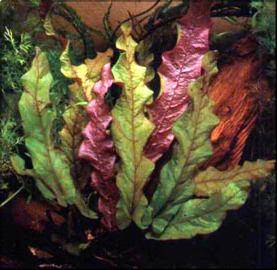
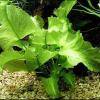 Nuphar japonicum
Nuphar japonicum Nymphaea lotus
Nymphaea lotus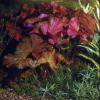 Nymphaea maculata
Nymphaea maculata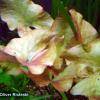 Nymphaea pubescens
Nymphaea pubescens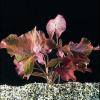 Nymphaea zenkeri
Nymphaea zenkeri